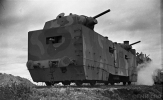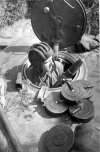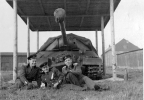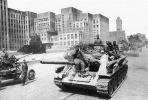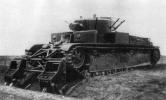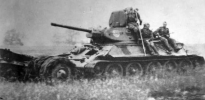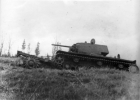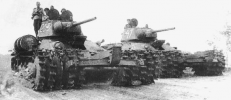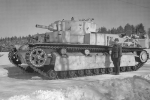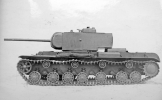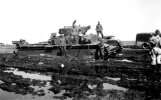You are using an out of date browser. It may not display this or other websites correctly.
You should upgrade or use an alternative browser.
You should upgrade or use an alternative browser.
Kinda almost looks like a WWI tank.
B
Blady
Guest
Interesting to see the Dshk mounted there in an AA role. It's not there on the other photos, making me wonder if this is a field modification, and if so, why? The IS-3 never saw field action (in WW2 at least) as far as I know.
Maybe it was stored so it was out of the way?
“Three pre-series vehicles were assigned to an independent Guards Battalion, but they arrived after the surrender documents were signed. There are unconfirmed reports of them fighting Jagdpanthers after the surrender. They also took part in the September 7th, 1945 victory parade in Berlin under the 71st Guards Heavy Tank Regiment of the 2nd Guards Tank Army.†– Wikipedia
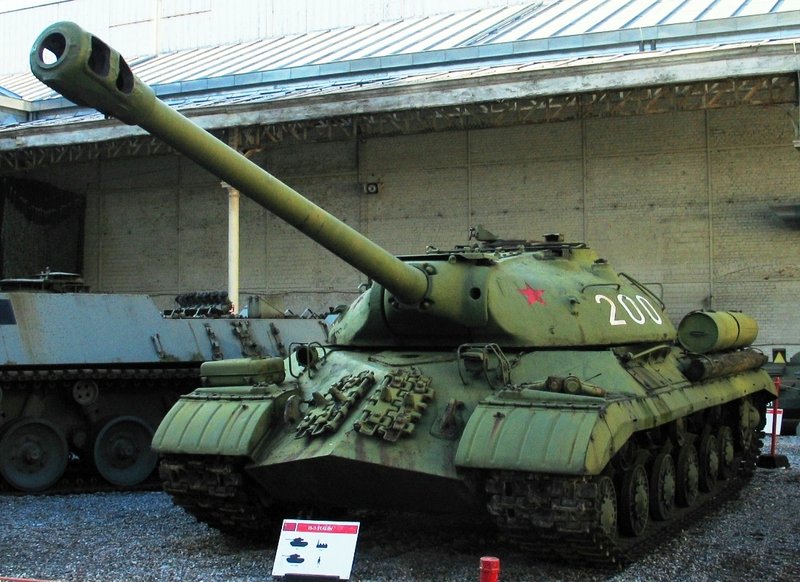
 en.wikipedia.org
en.wikipedia.org
“Three pre-series vehicles were assigned to an independent Guards Battalion, but they arrived after the surrender documents were signed. There are unconfirmed reports of them fighting Jagdpanthers after the surrender. They also took part in the September 7th, 1945 victory parade in Berlin under the 71st Guards Heavy Tank Regiment of the 2nd Guards Tank Army.†– Wikipedia

IS-3 - Wikipedia
Intel on German superheavy tanks hit the USSR in March of 1941. This led to the cancellation of existing heavy tank projects and introduction of new more powerful weapons, including the 107 mm ZIS-6 gun. This gun was meant to be used on KV-3, KV-4, and KV-5 tanks, but it was tested on a KV-2 since none of those tanks were available by the time the gun was finished. Courtesy of TankArchives on Twitter.
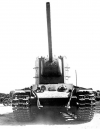
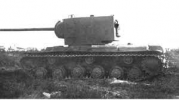
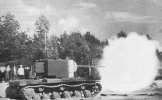



Guy in the black on the far right to the guy in the white uniform: "That is some cannon eh?"
Guy in the white uniform: "What?"
Guy in the white uniform: "What?"
The T-220 tank was initially supposed to weigh 56 tons, but ballooned to almost 63 tons in development. The extra strain on the engine reduced its lifespan significantly, but this didn't stop the army for requesting the even heavier KV-3, KV-4, and KV-5 tanks. The Red Army continued to entertain the idea of these impractical heavy tanks until a strict weight limit of 50 tons was established for all tanks in 1949. From TankArchives on Twitter.
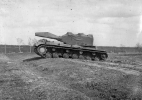
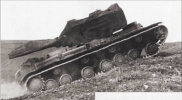


- Joined
- Oct 11, 2010
- Messages
- 13,130
- Reaction score
- 8,152
- Age
- 61
German soldiers dug a foxhole behind a knocked-out Soviet T-34 for protection against enemy mortar fire. Somewhere in Russia, July 1943.


50 years reading about WWII and looking at WWII photos and never saw this before: " T-34 tanks with skirt armour first saw battle on this date in 1943. The very first battles showed that protecting the sides from 50-75 mm guns was no longer the priority, it was more important to protect the front from 88 mm guns." From TankArchives on Twitter.
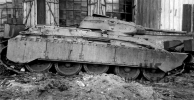

In March of '45 and second to the SU-100 Tank Destroyer at 353pts the SU-122s is worth 314pts.
- Joined
- Oct 11, 2010
- Messages
- 13,130
- Reaction score
- 8,152
- Age
- 61
Berlin, 1945. In the sky four Il-2 Sturmovik. On earth an IS-2 tank.


- Joined
- Oct 11, 2010
- Messages
- 13,130
- Reaction score
- 8,152
- Age
- 61
Red Army officers during a instruction with a T-26 Tank turret in the classroom. 1941.













